
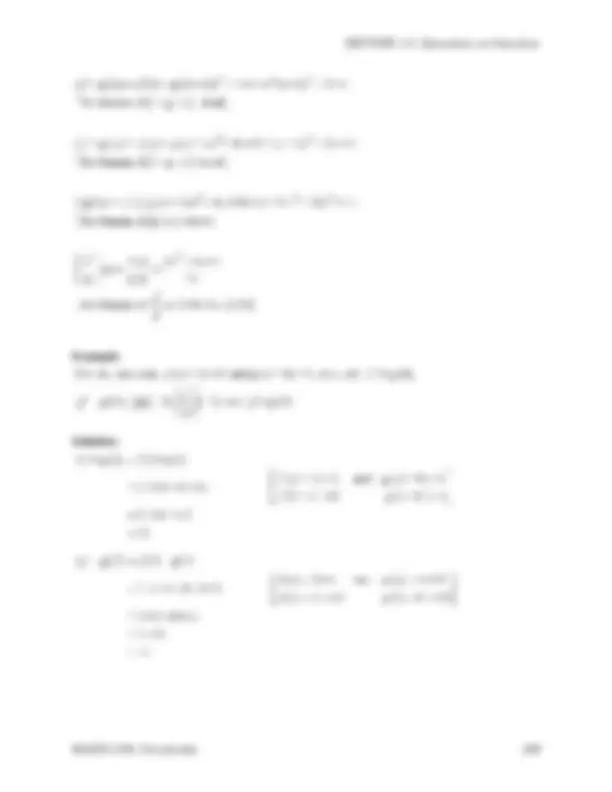
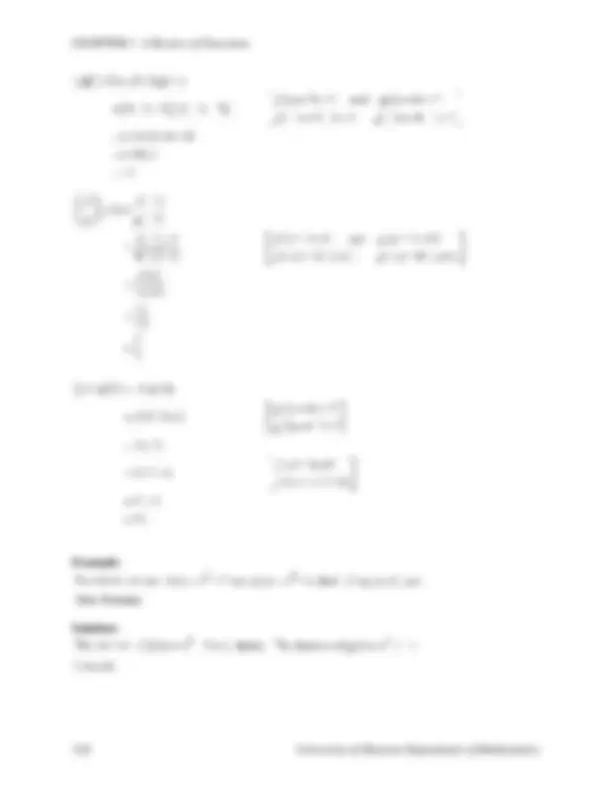
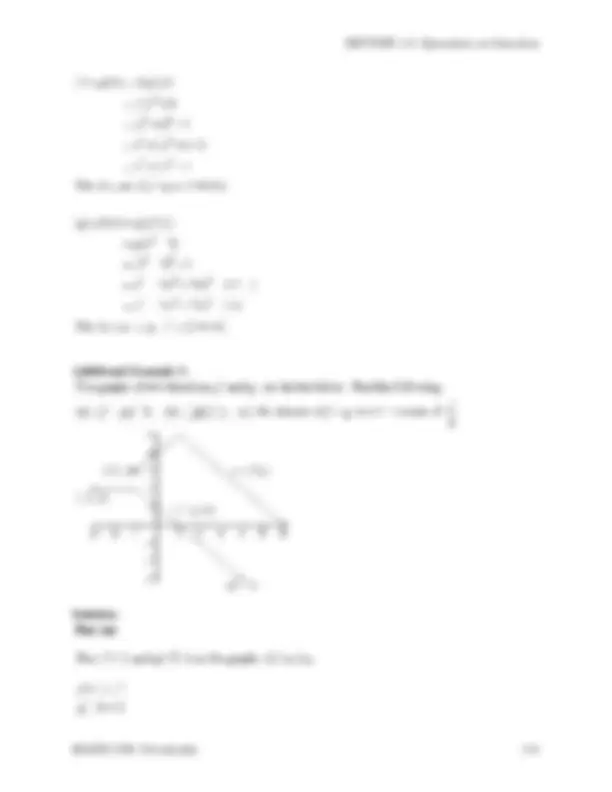
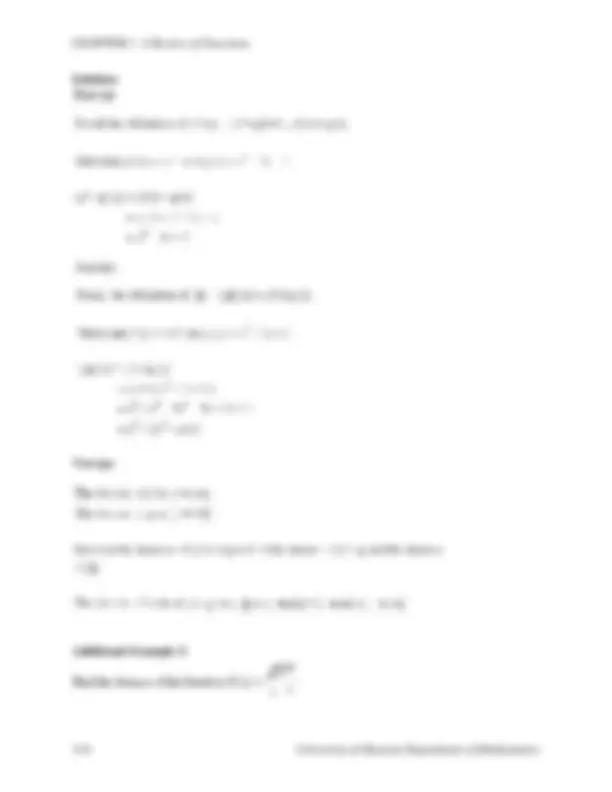
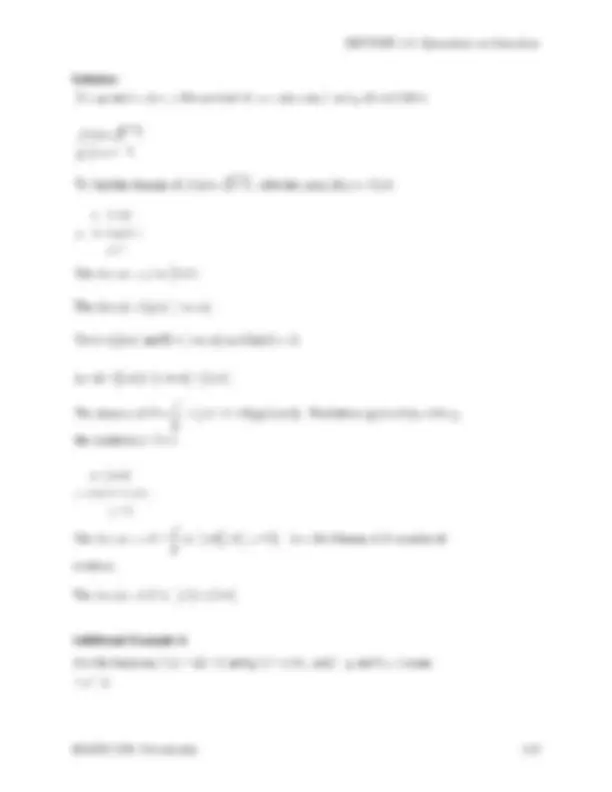
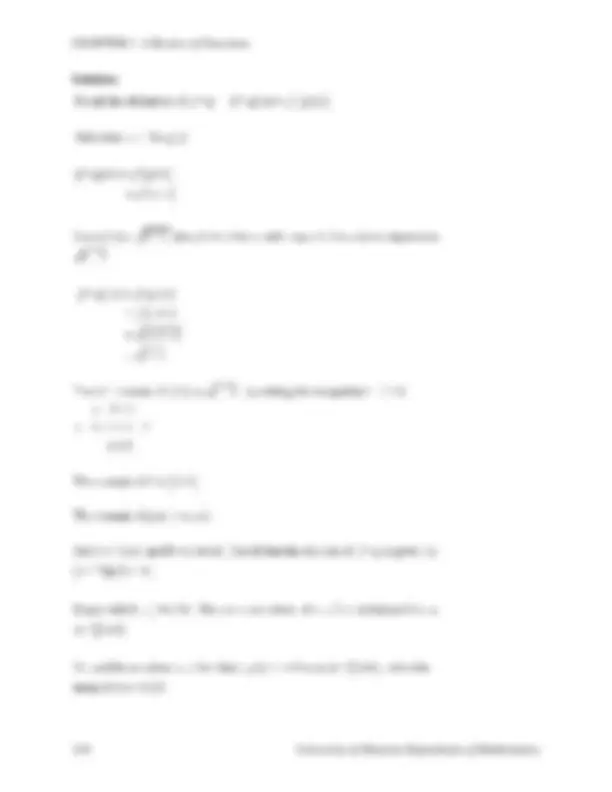
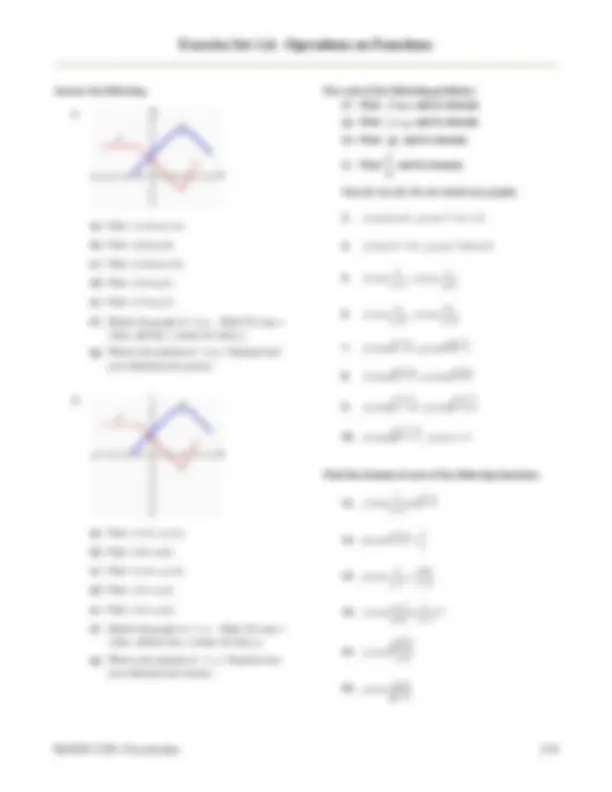
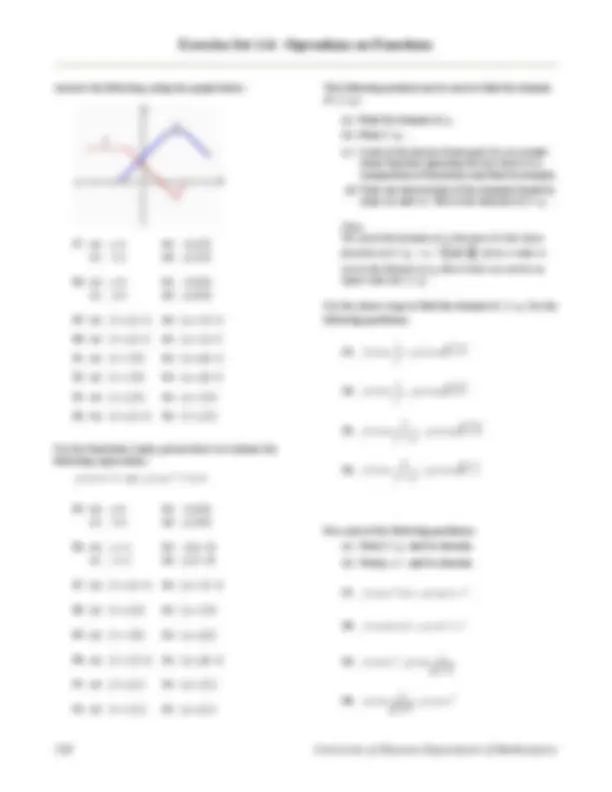
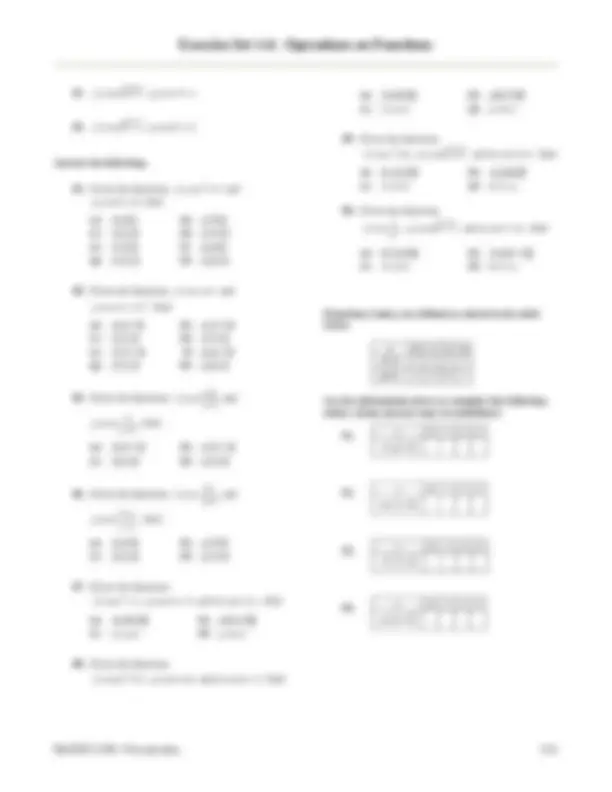


Study with the several resources on Docsity

Earn points by helping other students or get them with a premium plan


Prepare for your exams
Study with the several resources on Docsity

Earn points to download
Earn points by helping other students or get them with a premium plan
Community
Ask the community for help and clear up your study doubts
Discover the best universities in your country according to Docsity users
Free resources
Download our free guides on studying techniques, anxiety management strategies, and thesis advice from Docsity tutors
A section from a university mathematics textbook that covers the concepts of combining functions through addition, subtraction, multiplication, division, and composition. It includes definitions, examples, and exercises for students to practice. from the University of Houston Department of Mathematics Precalculus course (MATH 1330).
Typology: Study notes
1 / 15

This page cannot be seen from the preview
Don't miss anything!










Product:
Quotient:
Composition:
Exercise Set 1.4: Operations on Functions
x
y
f
g
x
y
f
g
2 fx x gx x x
3 2 fx x x gx x x
x
x gx x
fx
x
x gx x
fx
2 2 fx x gx x
2 fx x gx x
x x
fx
x
h x x
x
x
x
gx
x x
x fx
x
x f x
x
x gx
Exercise Set 1.4: Operations on Functions
(c) f ( 0 ) (d) g f 0
19. (a) f g 3 (b) g f 3
21. (a) f f 3 (b) g g 2
24. (a) f g 5 (b) f g 2
( ) 3 2 and () 5 4
2 fx x gx x x
25. (a) g ( 0 ) (b) f g 0
29. (a) f f 6 (b) g g 6 30. (a) (^) f f 4 (b) g g 4
function of (^) f g, i.e. f (^) g (^) x . If an x-value is
2
2
2
2
2 fx x x gx x
2 f ( ) x 6 x 2; g x ( ) 7 x
2
x
fx x gx
2 ; ( ) 5
( ) gx x x
f x
x
y
f
g